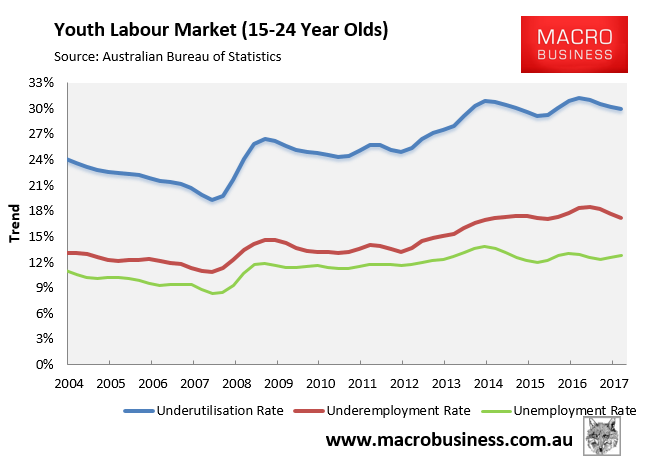A wage subsidy program for older workers that began almost four years ago has doubled its numbers in just a year after an intervention by Jobs and Innovation Minister Michaelia Cash, with funding for 30,000 new places each year set aside in last week’s budget.
The program, which gives subsidies of up to $10,000 to employers, made 12,140 payments last year, taking the total since 2014 to 24,000. The surge came after the program was retooled to allow businesses to be paid earlier so they could invest in training and support for their new hires.
This year’s budget, however, doubled down on support for mature workers…
The new $19.3m Skills and Training Incentive will help workers aged between 45 and 70 take up work in new fields by granting them $2000 — matched by an employer or the participant — to enrol in accredited training or even unaccredited courses that focus on digital skills or “soft skills”.
But after the success of wage subsidies for older workers, the program will now be uncapped. If demand is too high, places can be funded from the $1bn Employment Fund, which exists to pay for job-related training in the employment services sector.
Certainly, the barriers faced by over-50s is a serious matter, with reports of ‘ageism’ and a general reluctance by employers to hire older workers rife in the Australian workplace. This article from Seniors News, published last week, highlights the barriers:
After 18-months of tireless job hunting, Mr Hey is the perfect candidate for an expanded ‘Restart’ wage subsidy announced by federal treasurer Scott Morrison on Tuesday night.
A qualified industrial electrician with management experience, Mr Hey has applied for countless jobs in customer service and labour industries but “can’t even get a look in” with local employers.
“No one looks at anyone over the age of 60,” he said…
Mr Hey has been the beneficiary of such incentives before and the rewards didn’t last.
After 10 months in subsidised position doing contracted maintenance work, Mr Hey was waved goodbye and a younger employer was ushered in to fill his position.
“They got rid of me as soon as the money ran out.”
Mr Hey said being overqualified was a disadvantage and he had even “dumbed down” his resume to make his application more appealing.
In this regard, it is good to see the Government taking proactive steps to improve the employment situation facing over-50s.
That said, one wonders why the Federal Government continues to neglect Australia’s youth, which is arguably facing worse employment prospects? As noted frequently, the underutilisation rate for people aged 15-24 is 30%:
Whereas since the GFC, overall youth employment has fallen by 0.7% in trend terms, despite the 8% lift in the population of 15-24 year-olds over this time, with full-time jobs down an incredible 17.6%:

Surely then, the Budget needs to place a greater emphasis on Australia’s disenfranchised youth, who have been largely forgotten save for a few thousand dodgy internships.
Regardless, the deteriorating employment situation facing both younger and older workers does once again highlight the egregious nature of the Government’s mass immigration program, which has flooded the jobs market with additional workers and deprived the local underutilised workforce of employment opportunities.
As noted by the Treasury/Department of Home Affairs report, Shaping a Nation:
“Recent migrants accounted for two-thirds (64.5 per cent) of the approximately 850,000 net jobs created in the past five years. For full-time employment, the impact is even more pronounced, with recent migrants accounting for 72.4 per cent of new jobs created”.
Australia’s labour-market policy has given up on balancing the interests of employers and workers. The government has given employers what they want and ignored the needs of local underutilised Australians.


